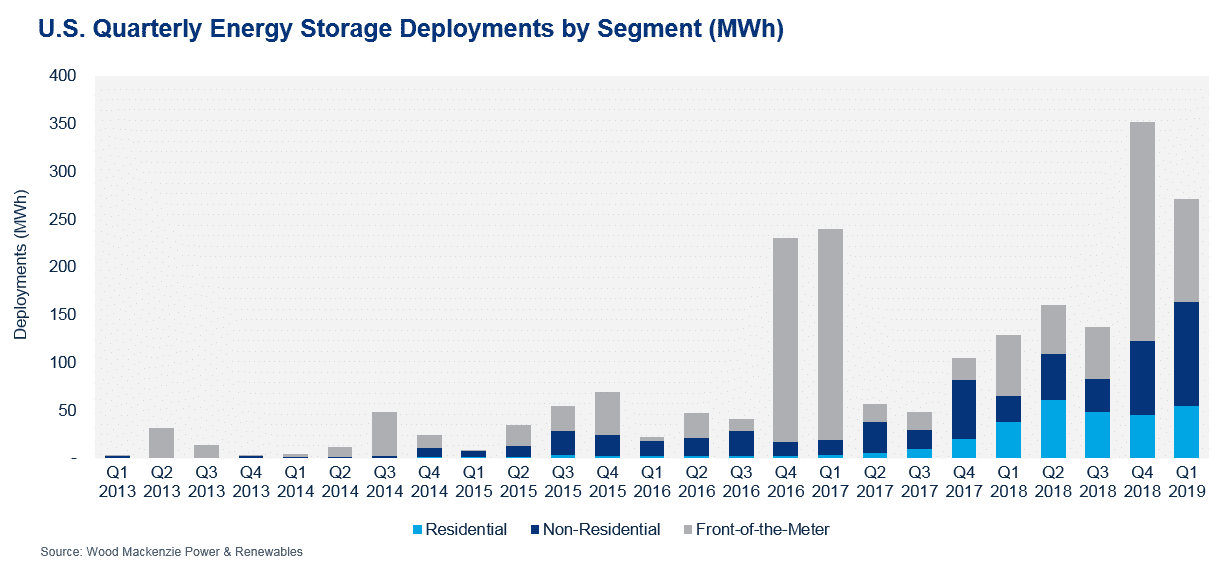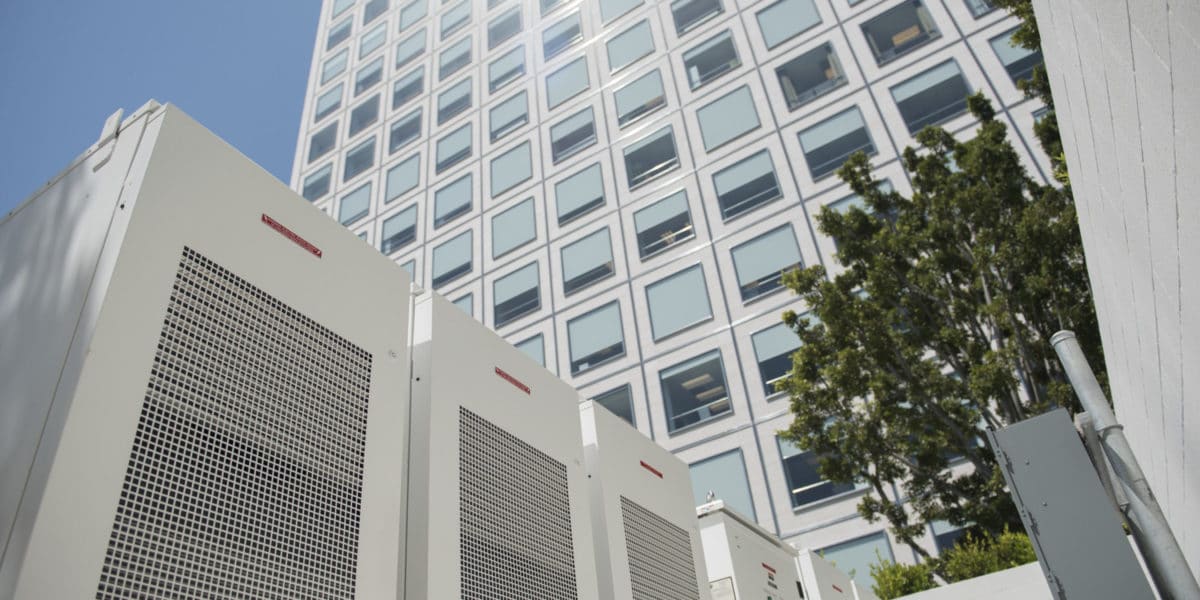The headlines are a bit easier to write when the growth is significant. Last year we got to say things like residential solar grew nine and ten times over prior quarters, and that 74% of residential customers were interested in storage with their solar. This year, we’re projecting the market will at least double as the United States becomes the world’s largest grid-tied energy storage market and energy storage’s investment grade status continues to grow.
Most important to this relatively small industry is that significant future growth is still projected with the pipelines building, the big players aiming for wind+solar+storage, and the imagination of entrepreneurs and federal government support pushing their hardest.

Wood Mackenzie Power & Renewables (WoodMac) and the Energy Storage Association’s (ESA) Q1 US Energy Storage Monitor reports that the U.S. energy storage market saw its largest quarter for megawatts deployed at 149 MW, while megawatt hours deployed was its second largest quarter (after Q4 2018) with 271 megawatt-hours (MWh) deployed. This represents growth of 232% and 110%, respectively, over the same quarters in 2018.
Front of the meter and behind the meter were close in terms of the portion of total volume deployed. 46% was behind the meter in terms of power, and 60% in terms of capacity. New Jersey stepped in front of California for front of the meter deployments.
The report noted that pipelines were building in Massachusetts and New York. In New York this is driven by policy, and New York’s $280 million in incentives, with $35 million of that in Block 1, was fully subscribed in a little over a week.

In 2018, the market installed approximately 311 MW / 777 MWh, and WoodMac projects that by 2024 this will grow more than 10x, as they see 4.5 GW valued at $4.8 billion being deployed in that year.
Many questions are still to be answered regarding energy storage. What will it really cost us? Will it only add half a penny per kWh to price the price of electricity or are those numbers just the early, low-hanging fruit stuff? Can factories churn out enough to meet demand? 2019 saw energy storage shortages while Tesla has changed over battery manufacturing lines to feed the very important Model 3 launch. And how long until we have a truly 24 hour PV power plant?
See you next quarter.
This content is protected by copyright and may not be reused. If you want to cooperate with us and would like to reuse some of our content, please contact: editors@pv-magazine.com.








By submitting this form you agree to pv magazine using your data for the purposes of publishing your comment.
Your personal data will only be disclosed or otherwise transmitted to third parties for the purposes of spam filtering or if this is necessary for technical maintenance of the website. Any other transfer to third parties will not take place unless this is justified on the basis of applicable data protection regulations or if pv magazine is legally obliged to do so.
You may revoke this consent at any time with effect for the future, in which case your personal data will be deleted immediately. Otherwise, your data will be deleted if pv magazine has processed your request or the purpose of data storage is fulfilled.
Further information on data privacy can be found in our Data Protection Policy.